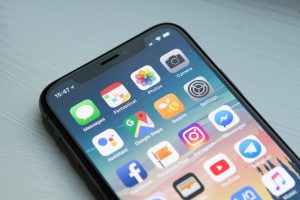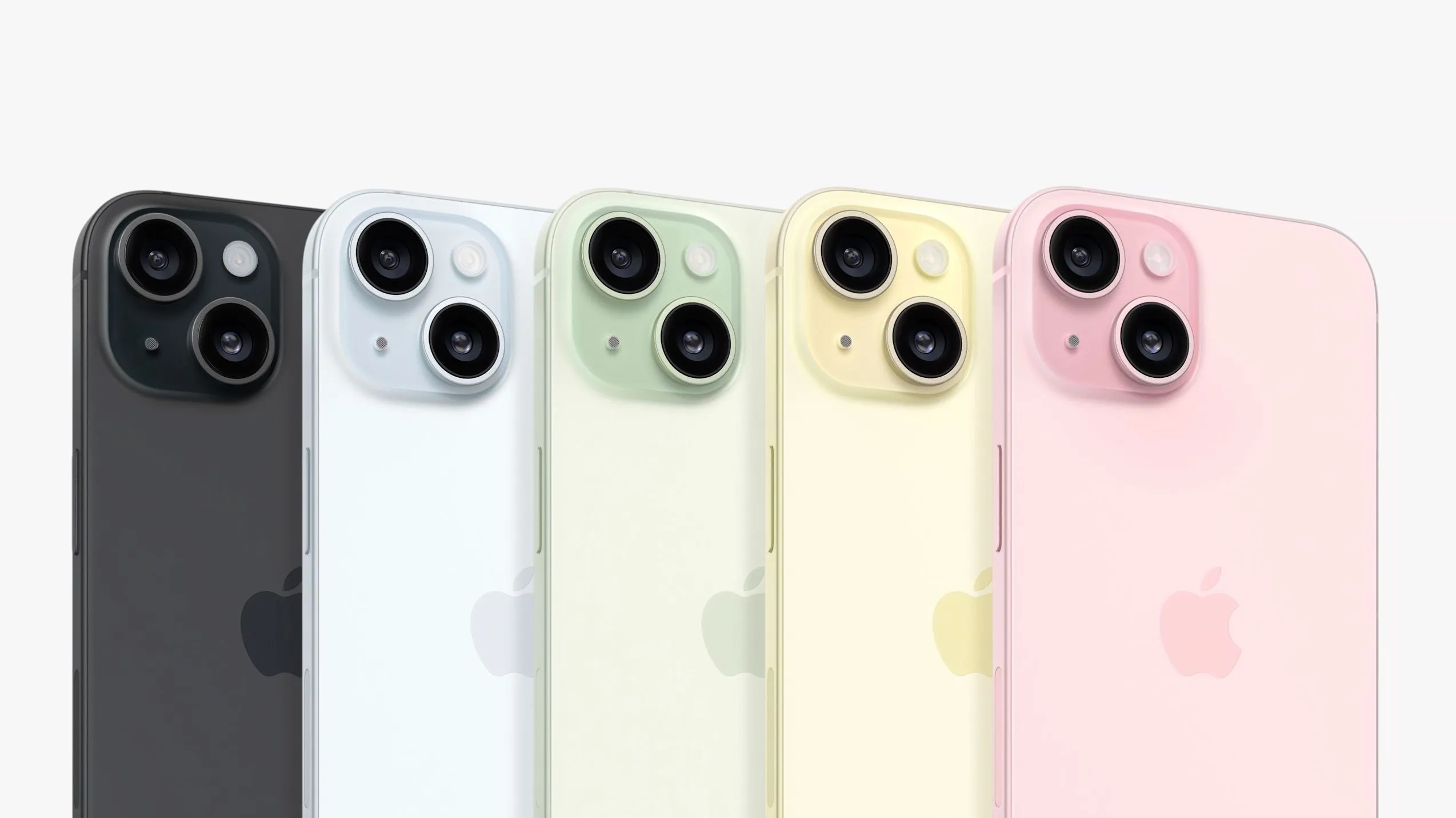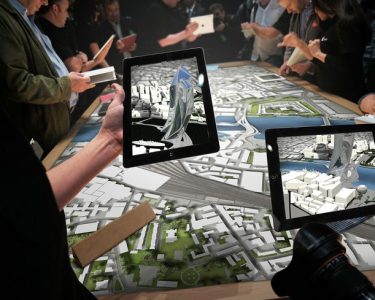Introduction
Hello, I’m Aaron, a seasoned blog writer and an avid iPhone user. I’ve been using iPhones for over a decade, and I’m always amazed by how much they can do. But I also know that many iPhone users are not aware of some of the hidden features and functions that can make their device even more powerful and convenient. That’s why I’ve compiled this list of 23 smart tips that will help you unlock your iPhone’s full potential. Whether you have an iPhone 14 or an older model, these tips will help you enhance your user experience, save time, and have more fun with your iPhone. Let’s get started!
Tip 1: Charge Your Battery Faster in Airplane Mode
One of the most common complaints among iPhone users is the battery life. Sometimes, you need to charge your iPhone quickly, but it seems to take forever. A simple trick to speed up the charging process is to turn on Airplane Mode. This will disable the cellular, Wi-Fi, Bluetooth, and GPS functions, which consume a lot of power. By doing this, you can reduce the battery drain and charge your iPhone faster. To turn on Airplane Mode, swipe down from the top right corner of the screen and tap the airplane icon. Don’t forget to turn it off when you’re done charging.
Tip 2: Take Photos with the Volume Buttons
Tapping the on-screen camera button is not the only way to take photos with your iPhone. You can also use the volume up or down buttons on the side of your device. This can be more convenient and comfortable, especially when you’re holding your iPhone horizontally or using a selfie stick. You can also use the volume buttons on your headphones or earbuds to snap a photo. Just make sure you have the Camera app open and press the volume button to capture the moment.
Tip 3: Let Siri Help You Take Photos
Siri, the voice assistant on your iPhone, can do more than just answer your questions and set reminders. It can also help you take photos and videos with the Camera app. All you have to do is activate Siri (by holding down the Home or Side button, depending on your model) and ask it to take a photo or video. You can also specify the type of photo or video you want, such as square, panoramic, slow-motion, time-lapse, or selfie. For example, you can say “Hey Siri, take a panoramic photo” or “Hey Siri, take a slow-motion video”. Siri will open the Camera app and switch to the mode you requested. Then, you just need to tap the camera or volume button to take the shot.
Tip 4: Create Custom Alerts for Different People
If you want to know who’s calling or texting you without looking at your screen, you can assign custom ringtones and vibrations to different contacts. This way, you can recognize your family, friends, or coworkers by the sound or feel of your iPhone. To do this, open the Contacts app and select the person you want to customize. Then, tap Edit and choose Ringtone or Text Tone. You can select from the default options or purchase new ones from the iTunes Store. You can also create your own vibration pattern by tapping Vibration and then Create New Vibration. Tap the screen to record your vibration and save it with a name. You can repeat this process for as many contacts as you want.
Tip 5: Use iPhone as a Magnifying Glass
Did you know that your iPhone can double as a magnifying glass? This can be handy when you need to read small print, inspect details, or zoom in on something. To use this feature, you need to enable it first. Go to Settings > Accessibility > Magnifier and turn on the switch. Then, you can access the Magnifier by triple-clicking the Home or Side button, depending on your model. You can use the slider to adjust the zoom level, the flash to illuminate the object, and the filters to change the color or contrast. You can also take a photo of what you’re magnifying by tapping the shutter button.
Tip 6: Teach Siri to Call You by a Certain Name
Siri can call you by your name, but sometimes it may not pronounce it correctly or use the name you prefer. If you want to change how Siri addresses you, you can teach it to call you by a certain name. For example, you can ask Siri to call you by your nickname, your initials, or your title. To do this, activate Siri and say “Call me [name]”. Siri will confirm your request and ask if you want it to remember that name. Say “Yes” and Siri will update your contact information. From then on, Siri will call you by the name you specified.
Tip 7: Correct Siri’s Mispronunciation of a Name
If Siri mispronounces a name, whether it’s yours or someone else’s, you can correct it. For example, if Siri says “John” instead of “Jon”, you can teach it the right way to say it. To do this, activate Siri and say “That’s not how you pronounce [name]”. Siri will ask you how to pronounce the name and give you some options to choose from. You can listen to each option and select the one that sounds correct. Siri will then remember the correct pronunciation and use it in the future.
Tip 8: Connect Two Pairs of AirPods to the Same iPhone
If you have AirPods, the wireless earbuds from Apple, you can share your audio with another person who also has AirPods. This is useful when you want to listen to the same music, podcast, or movie with someone else, without disturbing others or using a splitter. To do this, you need to have iOS 13 or later on your iPhone and AirPods Pro or AirPods (2nd generation) on both pairs of earbuds. Then, follow these steps:
- Open the Control Center on your iPhone by swiping down from the top right corner of the screen.
- Tap and hold the audio card, which shows what you’re playing and where it’s playing.
- Tap the AirPlay icon, which looks like a triangle with three circles.
- Tap Share Audio and bring the other person’s AirPods close to your iPhone.
- Follow the instructions on the screen to connect the second pair of AirPods.
- Tap Done and enjoy the shared audio.
You can adjust the volume for each pair of AirPods separately by using the volume slider on the audio card. You can also stop sharing audio by tapping the AirPlay icon and tapping Stop Sharing.
Tip 9: Unsubscribe to Services No Longer Needed
If you have subscribed to any services or apps through your iPhone, such as Apple Music, Netflix, or Spotify, you can easily manage or cancel them from your device. This can help you save money and avoid unwanted charges. To do this, go to Settings > [Your Name] > Subscriptions. You’ll see a list of all the active and expired subscriptions linked to your Apple ID. Tap the one you want to manage and choose from the options available. You can change your subscription plan, renew an expired subscription, or cancel an active subscription. If you cancel a subscription, you’ll still have access to it until the end of the current billing cycle.
Tip 10: Use Dark Mode to Save Battery and Reduce Eye Strain
Dark Mode is a feature that changes the appearance of your iPhone’s interface from light to dark. This can help you save battery life, especially if you have an iPhone with an OLED screen, such as the iPhone X or later. It can also reduce eye strain and make your iPhone easier to use in low-light conditions. To use Dark Mode, you can either turn it on manually or schedule it to turn on automatically. To turn it on manually, swipe down from the top right corner of the screen and tap the Dark Mode icon, which looks like a crescent moon. To schedule it, go to Settings > Display & Brightness and tap the Automatic switch. Then, tap Options and choose Sunset to Sunrise or Custom Schedule. You can also choose which apps and websites support Dark Mode by going to Settings > Display & Brightness and tapping Appearance.

Tip 11: Use Live Photos to Capture More Than a Moment
Live Photos is a feature that lets you capture more than a still image. It records 1.5 seconds of video and audio before and after you take a photo, creating a mini-movie that brings your photo to life. To use Live Photos, open the Camera app and tap the Live Photos icon, which looks like a circle with three rings. It will turn yellow when it’s on. Then, take a photo as usual and hold your iPhone still for a few seconds. You can view your Live Photo in the Photos app by tapping it and pressing and holding the screen. You can also edit your Live Photo by swiping up and choosing from the effects available, such as Loop, Bounce, or Long Exposure. You can also set your Live Photo as your wallpaper or share it with others.
Tip 12: Use Night Mode to Take Better Photos in Low Light
Night Mode is a feature that lets you take better photos in low-light situations. It automatically turns on when the Camera app detects that there’s not enough light. It uses a combination of longer exposure, image stabilization, and machine learning to take better photos
Tip 13: Use Portrait Mode to Create Stunning Photos with Depth Effect
Portrait Mode is a feature that lets you create stunning photos with a depth effect, which blurs the background and focuses on the subject. This can make your photos look more professional and artistic. To use Portrait Mode, open the Camera app and swipe to the Portrait mode. You’ll see a yellow box around the subject and a message that says “Natural Light”. You can also choose from other lighting effects, such as Studio Light, Contour Light, Stage Light, or Stage Light Mono. Tap the shutter button to take the photo and wait for the depth effect to be applied. You can view your Portrait photo in the Photos app and adjust the depth or lighting effect by tapping Edit.
Tip 14: Use Face ID to Unlock Your iPhone and More
Face ID is a feature that lets you unlock your iPhone and more with your face. It uses a sophisticated system of cameras and sensors to scan your face and verify your identity. It’s fast, secure, and convenient. To use Face ID, you need to have an iPhone X or later and set it up first. Go to Settings > Face ID & Passcode and follow the instructions to enroll your face. You can also choose what you want to use Face ID for, such as unlocking your iPhone, signing in to apps, or making payments. To use Face ID, just look at your iPhone and swipe up from the bottom of the screen. You’ll see a lock icon that turns into an unlock icon when Face ID recognizes you.
Tip 15: Use Animoji and Memoji to Express Yourself
Animoji and Memoji are animated characters that mimic your facial expressions and voice. You can use them to create fun and personalized messages, videos, or stickers. To use Animoji and Memoji, you need to have an iPhone X or later and the Messages app. Open the Messages app and tap the Animoji icon, which looks like a monkey. You’ll see a list of Animoji characters, such as a panda, a unicorn, or a robot. You can also create your own Memoji character by tapping the plus sign and customizing your appearance, hairstyle, accessories, and more. To use an Animoji or Memoji, tap the one you want and look at your iPhone. You’ll see the character move and talk as you do. You can record a message by tapping the red button and send it by tapping the blue arrow. You can also take a photo by tapping the white button or create a sticker by making a pose and tapping the character.
Tip 16: Use Screen Time to Monitor and Manage Your iPhone Usage
Screen Time is a feature that lets you monitor and manage your iPhone usage. It shows you how much time you spend on your device, what apps you use, and how often you pick up your phone. It also lets you set limits and restrictions for yourself or your family members. To use Screen Time, go to Settings > Screen Time and turn it on. You’ll see a summary of your usage and a list of options to customize your Screen Time settings. You can tap See All Activity to see more details, such as your daily and weekly averages, your most used apps and categories, and your notifications and pickups. You can also tap App Limits to set time limits for specific apps or categories, such as social networking, games, or entertainment. You can also tap Downtime to schedule a period of time when only certain apps are allowed, such as phone, messages, or maps. You can also tap Content & Privacy Restrictions to block or allow certain content, such as explicit music, movies, or websites.
Tip 17: Use AirDrop to Share Files with Nearby Devices
AirDrop is a feature that lets you share files with nearby devices, such as iPhones, iPads, Macs, or iPods. It uses Bluetooth and Wi-Fi to transfer files wirelessly and securely. It’s fast, easy, and convenient. To use AirDrop, you need to have iOS 7 or later on your iPhone and the other device. You also need to turn on Bluetooth and Wi-Fi on both devices and be within 30 feet of each other. To share a file with AirDrop, open the app that contains the file, such as Photos, Safari, or Contacts. Tap the Share icon, which looks like a box with an arrow. You’ll see a list of nearby devices that have AirDrop enabled. Tap the one you want to share with and wait for the other device to accept the file. You can also receive files with AirDrop by swiping down from the top right corner of the screen and tapping the AirDrop icon. You can choose to receive files from Contacts Only, Everyone, or Receiving Off. You’ll see a notification when someone tries to send you a file and you can accept or decline it.
Tip 18: Use Do Not Disturb to Silence Notifications and Calls
Do Not Disturb is a feature that lets you silence notifications and calls when you don’t want to be disturbed. It can help you focus, sleep, or relax without interruptions. To use Do Not Disturb, swipe down from the top right corner of the screen and tap the Do Not Disturb icon, which looks like a crescent moon. It will turn purple when it’s on. You can also schedule Do Not Disturb to turn on automatically at certain times or locations. Go to Settings > Do Not Disturb and turn on the Scheduled switch. Then, tap the From and To fields to set the start and end times. You can also tap Bedtime to dim your screen and hide notifications during the scheduled time. You can also tap Allow Calls From to choose who can call you when Do Not Disturb is on, such as Favorites, All Contacts, or No One. You can also tap Repeated Calls to allow a second call from the same person within three minutes to go through.

Tip 19: Use Widgets to Access Information and Actions Quickly
Widgets are mini-apps that display information and actions on your Home Screen or Today View. They can help you access information and actions quickly and conveniently. To use widgets, you need to have iOS 14 or later on your iPhone. To add widgets to your Home Screen, touch and hold an empty area on the screen until the apps jiggle. Then, tap the plus sign at the top left corner. You’ll see a list of widgets from different apps, such as Weather, Calendar, or Music. You can also search for a widget by name or scroll to see more. Tap the widget you want to add and choose the size you prefer. Then, tap Add Widget and drag it to the desired location on the screen. Tap Done when you’re finished. To add widgets to your Today View, swipe right from the left edge of the screen until you see the Today View. Then, scroll to the bottom and tap Edit. You’ll see a list of widgets that you can add, remove, or rearrange. Tap the green plus sign to add a widget, the red minus sign to remove a widget, or the three lines to rearrange a widget. Tap Done when you’re finished.
Tip 20: Use Shortcuts to Automate Tasks and Actions
Shortcuts are custom-made or pre-made commands that automate tasks and actions on your iPhone. They can help you save time and effort by performing multiple steps with a single tap, voice, or gesture. To use shortcuts, you need to have the Shortcuts app on your iPhone. You can download it from the App Store if you don’t have it already. To create a shortcut, open the Shortcuts app and tap the plus sign at the top right corner. You’ll see a list of actions that you can add to your shortcut, such as Send Message, Play Music, or Get Directions. You can also search for an action by name or category. Tap the action you want to add and customize the details, such as the recipient, the playlist, or the destination. You can also add more actions by tapping the plus sign again. You can also rename your shortcut, add an icon, or add it to your Home Screen or Widget. To run a shortcut, tap it in the Shortcuts app, on your Home Screen, or on your Widget. You can also ask Siri to run it by saying “Hey Siri, [shortcut name]”. You can also use the Back Tap feature to run a shortcut by tapping the back of your iPhone. To do this, go to Settings > Accessibility > Touch > Back Tap and choose Double Tap or Triple Tap. Then, select the shortcut you want to run.
Tip 21: Use Scan and Sign to Digitize and Sign Documents
Scan and Sign is a feature that lets you digitize and sign documents with your iPhone. It uses the camera and the Markup tool to scan, crop, rotate, annotate, and sign documents. It’s useful when you need to send or save a document electronically. To use Scan and Sign, open the Notes app and create a new note. Tap the camera icon at the bottom and choose Scan Documents. Point your iPhone at the document and wait for it to capture it automatically. You can also tap the shutter button to capture it manually. You can scan multiple pages by repeating the process. You can also adjust the corners, color, or orientation of the scanned document by tapping it. To sign the document, tap the share icon at the top right corner and choose Markup. Tap the plus sign at the bottom right corner and choose Signature. You can create a new signature by using your finger or a stylus, or use an existing one by tapping it. You can also move, resize, or rotate the signature by dragging it. To save or send the document, tap Done and choose Save File To or Share.
Tip 22: Use Smart Stack to View Multiple Widgets in One Place
Smart Stack is a feature that lets you view multiple widgets in one place. It automatically rotates the widgets based on your usage, time, or location. It can help you access information and actions from different apps without cluttering your Home Screen or Today View. To use Smart Stack, you need to have iOS 14 or later on your iPhone. You can use Smart Stack in two ways:
- Use the pre-made Smart Stack: Apple provides a pre-made Smart Stack that includes widgets from various apps, such as Weather, Calendar, Photos, or News. To add the pre-made Smart Stack to your Home Screen, touch and hold an empty area on the screen until the apps jiggle. Then, tap the plus sign at the top left corner and scroll to the Smart Stack widget. Tap it and choose the size you prefer. Then, tap Add Widget and drag it to the desired location on the screen. Tap Done when you’re finished.
- Create your own Smart Stack: You can also create your own Smart Stack by stacking widgets from different apps. To do this, touch and hold an empty area on the screen until the apps jiggle. Then, tap the plus sign at the top left corner and select a widget that you want to add. Choose the size you prefer and drag it to the Home Screen. Then, tap the plus sign again and select another widget with the same size. Drag it on top of the first widget to create a stack. You can repeat this process to add more widgets to the stack. Tap Done when you’re finished.
To use the Smart Stack, you can swipe up or down on the widget to see the different widgets in the stack. You can also tap the widget to launch the app. You can also edit the Smart Stack by touching and holding it and choosing Edit Stack. You can turn on or off the Smart Rotate option, which automatically shows the most relevant widget. You can also reorder or remove the widgets in the stack by dragging them or tapping the minus sign.
Tip 23: Use App Library to Organize Your Apps Automatically
App Library is a feature that organizes your apps automatically into categories and folders. It can help you find and launch your apps easily without scrolling through multiple Home Screen pages. To use App Library, you need to have iOS 14 or later on your iPhone. You can access App Library by swiping left from the right edge of the Home Screen until you reach the last page. You’ll see a grid of folders that contain your apps, such as Suggestions, Recently Added, Social, or Entertainment. You can tap a folder to see all the apps inside it or tap an app to launch it. You can also search for an app by name or category by tapping the search bar at the top. You can also hide Home Screen pages that you don’t use often and access them from the App Library. To do this, touch and hold an empty area on the Home Screen until the apps jiggle. Then, tap the dots at the bottom of the screen. You’ll see a preview of your Home Screen pages. You can uncheck the pages that you want to hide and tap Done. You can also add pages back by checking them again.




